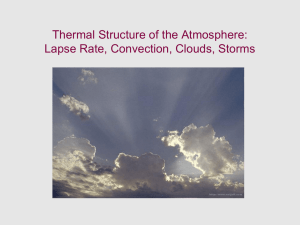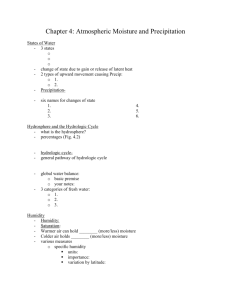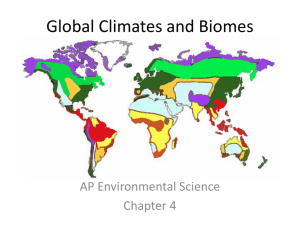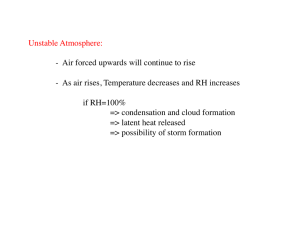SIO 217C: Climate Spring 2014 Convection Discussion Questions
advertisement
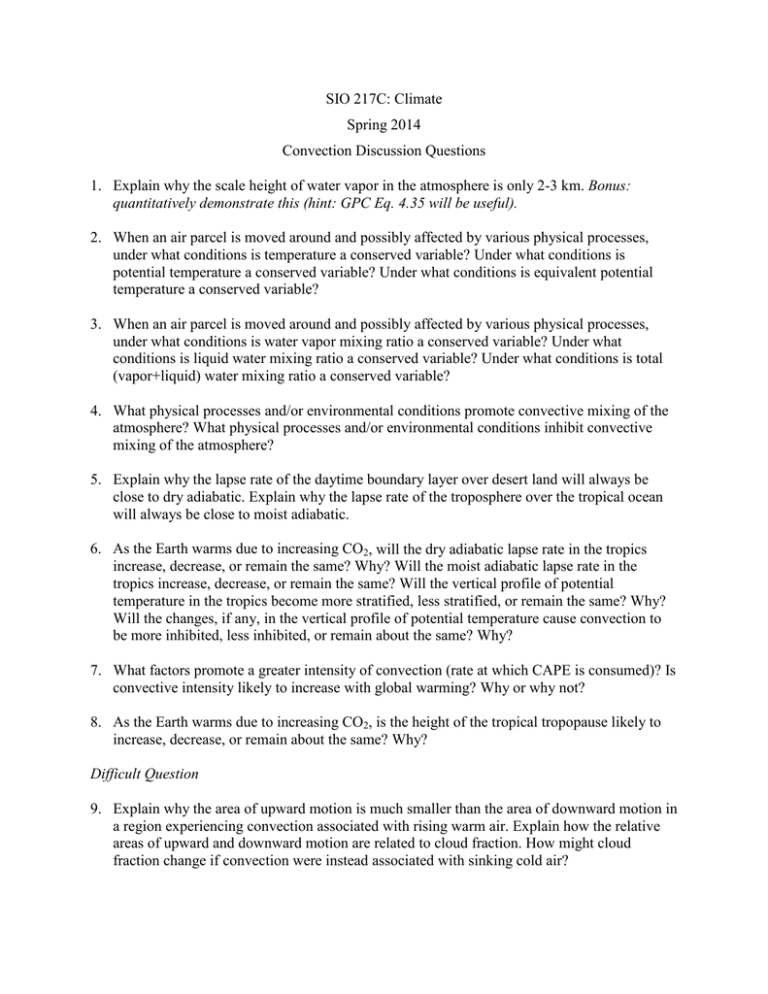
SIO 217C: Climate Spring 2014 Convection Discussion Questions 1. Explain why the scale height of water vapor in the atmosphere is only 2-3 km. Bonus: quantitatively demonstrate this (hint: GPC Eq. 4.35 will be useful). 2. When an air parcel is moved around and possibly affected by various physical processes, under what conditions is temperature a conserved variable? Under what conditions is potential temperature a conserved variable? Under what conditions is equivalent potential temperature a conserved variable? 3. When an air parcel is moved around and possibly affected by various physical processes, under what conditions is water vapor mixing ratio a conserved variable? Under what conditions is liquid water mixing ratio a conserved variable? Under what conditions is total (vapor+liquid) water mixing ratio a conserved variable? 4. What physical processes and/or environmental conditions promote convective mixing of the atmosphere? What physical processes and/or environmental conditions inhibit convective mixing of the atmosphere? 5. Explain why the lapse rate of the daytime boundary layer over desert land will always be close to dry adiabatic. Explain why the lapse rate of the troposphere over the tropical ocean will always be close to moist adiabatic. 6. As the Earth warms due to increasing CO2, will the dry adiabatic lapse rate in the tropics increase, decrease, or remain the same? Why? Will the moist adiabatic lapse rate in the tropics increase, decrease, or remain the same? Will the vertical profile of potential temperature in the tropics become more stratified, less stratified, or remain the same? Why? Will the changes, if any, in the vertical profile of potential temperature cause convection to be more inhibited, less inhibited, or remain about the same? Why? 7. What factors promote a greater intensity of convection (rate at which CAPE is consumed)? Is convective intensity likely to increase with global warming? Why or why not? 8. As the Earth warms due to increasing CO2, is the height of the tropical tropopause likely to increase, decrease, or remain about the same? Why? Difficult Question 9. Explain why the area of upward motion is much smaller than the area of downward motion in a region experiencing convection associated with rising warm air. Explain how the relative areas of upward and downward motion are related to cloud fraction. How might cloud fraction change if convection were instead associated with sinking cold air?

